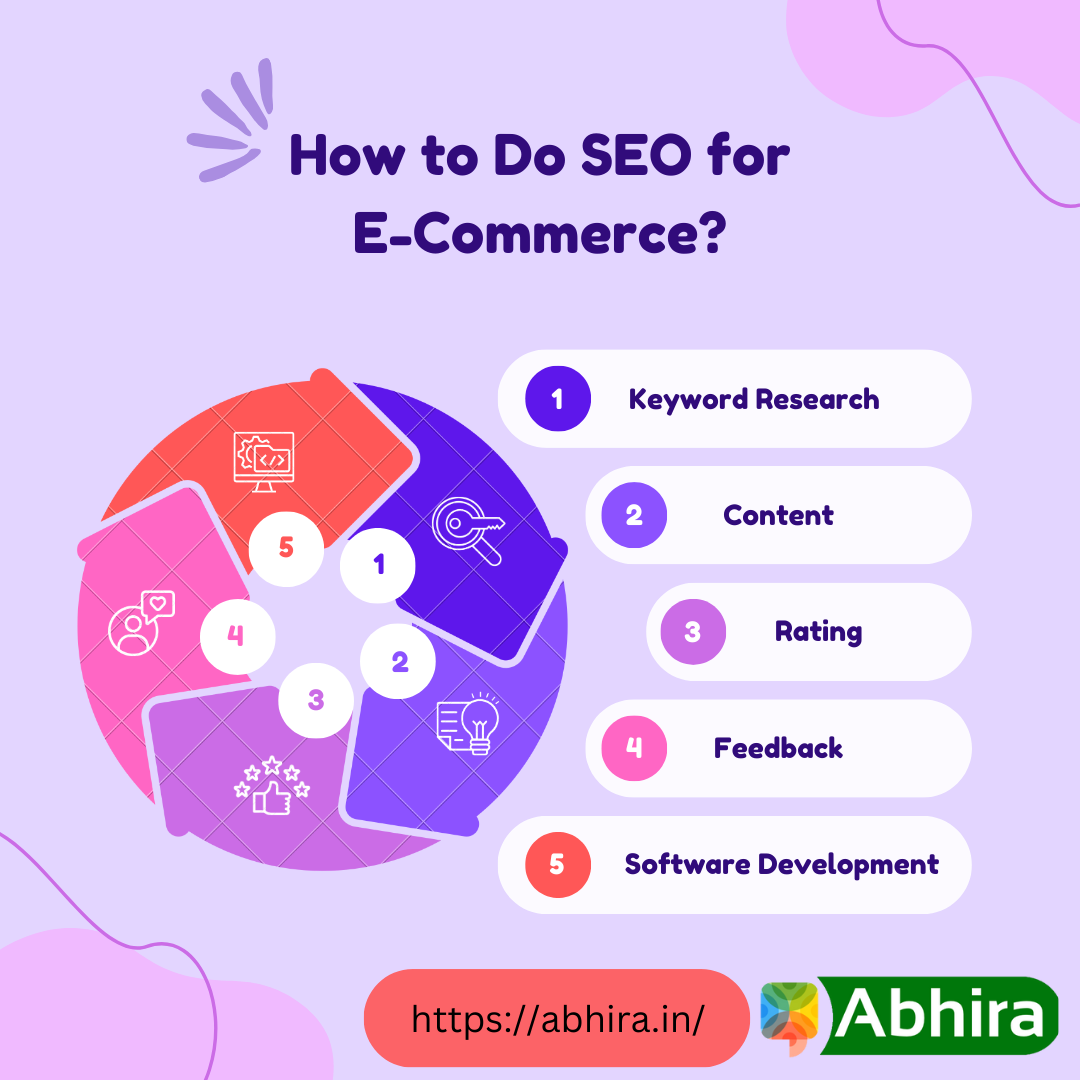How to Do SEO for E-Commerce?

-
Keyword Research:
- Identify relevant and high-converting keywords related to your products.
- Focus on long-tail keywords that reflect user intent and specific product queries.
- Utilize tools like Google Keyword Planner or SEMrush for keyword research.
-
On-Page Optimization:
- Optimize product pages with unique and compelling meta titles and descriptions.
- Include target keywords naturally in product titles, headings, and throughout product descriptions.
- Optimize product images with descriptive alt text.
-
Site Structure and Navigation:
- Ensure a clear and user-friendly site structure with logical categories and subcategories.
- Implement breadcrumb navigation for easy user navigation and search engine understanding.
- Use a sitemap to help search engines index your pages effectively.
-
Mobile Optimization:
- Optimize your e-commerce site for mobile devices as a significant portion of users shop on smartphones.
- Ensure responsive design and fast-loading pages for a seamless mobile experience.
-
Product Schema Markup:
- Implement structured data (schema markup) to provide search engines with detailed information about your products.
- Rich snippets can enhance the visibility of your products in search results.
-
User-Generated Content:
- Encourage customer reviews and ratings for your products.
- User-generated content not only boosts SEO but also builds trust among potential customers.
-
High-Quality Content:
- Create informative and engaging content, such as blog posts, buying guides, or tutorials related to your products.
- Diversify your content to capture a broader audience and establish your site as an authoritative resource.
-
Optimized URLs:
- Use SEO-friendly URLs that include relevant keywords and are easy to understand.
- Avoid dynamic URLs with unnecessary parameters.
-
Technical SEO:
- Regularly audit and fix crawl errors, broken links, and duplicate content.
- Optimize page speed for faster loading times, which is crucial for user experience and SEO.
-
Secure Website (HTTPS):
- Ensure your e-commerce site has an SSL certificate, making it secure for users.
- Google considers HTTPS as a ranking factor, and it builds trust with customers.
-
Social Media Integration:
- Leverage social media to promote products and drive traffic to your e-commerce site.
- Social signals can indirectly impact search engine rankings.
-
Continuous Monitoring and Analytics:
- Use tools like Google Analytics to monitor website performance, user behavior, and keyword rankings.
- Regularly update your SEO strategy based on performance data and algorithm changes.

البحث
إعلان مُمول
إعلان مُمول
الأقسام
- Web Development
- Art
- Causes
- Crafts
- Dance
- Drinks
- Film
- Fitness
- Food
- الألعاب
- Gardening
- Health
- الرئيسية
- Literature
- Music
- Networking
- أخرى
- Party
- Religion
- Shopping
- Sports
- Theater
- Wellness
إقرأ المزيد
Handmade Treasures for Your Home: Kalaarii Craft
In a world where mass-produced items dominate, Kalaarii Craft brings the authenticity of handmade...
A Deep Dive in WordPress Vulnerabilities issues
WordPress, the world’s most popular content management system (CMS), powers over 40% of all...
How to Avoid Them WordPress Security Mistakes
1. Neglecting Regular Updates
Mistake: Failing to update WordPress core, plugins, and themes....
Essential Steps Every Website Owner Should Follow for Online Success
Building a website is the first step toward establishing a digital presence, but making it...
Technology in Education: Balancing Advantages and Drawbacks
1. Technology in Education: Balancing Advantages and DrawbacksThe infusion of technology in...


